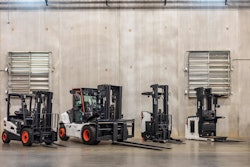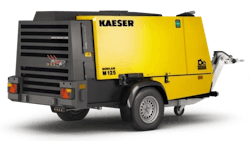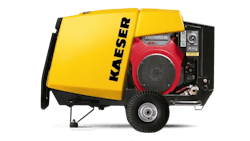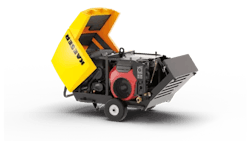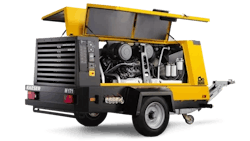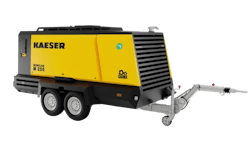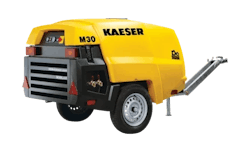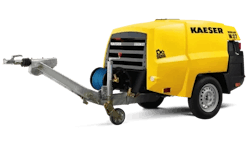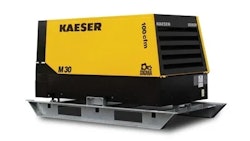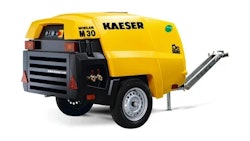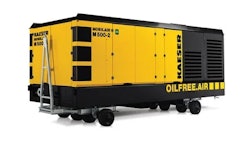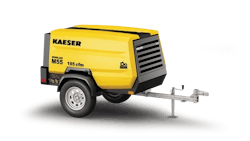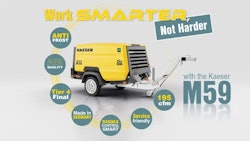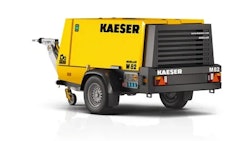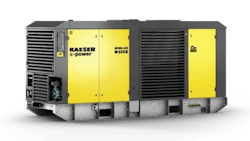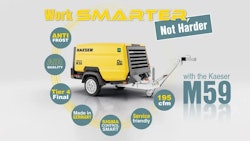Air Compressors
In the construction sector, air compressors are essential because they offer a flexible and effective power source for a range of uses. A variety of pneumatic tools and equipment can be powered by compressed air, which is created by these machines from ambient air. Air compressors are essential for a variety of construction-related jobs, including drilling, nailing, painting, and more. This wiki page explores the main features of air compressors, including their types, uses in the building industry, and effects on increasing efficiency and production.
In the construction sector, air compressors are essential because they offer a flexible and effective power source for a range of uses. A variety of pneumatic tools and equipment can be powered by compressed air, which is created by these machines from ambient air. Air compressors are essential for a variety of construction-related jobs, including drilling, nailing, painting, and more. This wiki page explores the main features of air compressors, including their types, uses in the building industry, and effects on increasing efficiency and production.
Explanation
By compressing and pressurizing air, an air compressor is a mechanical device that transforms power from an external source—usually an internal combustion engine or an electric motor—into kinetic energy. Following that, the compressed air can be applied to a variety of industrial and construction tasks.
Fundamental Operational Concept
In order to boost pressure, the basic functioning concept includes pulling in ambient air and compressing it. For use in pneumatic tools and machines, this compressed air is either released immediately through pipelines or kept in a tank.
Air Compressor Components
An air compressor's motor or engine, air tank, control system, and compressor pump are its essential parts. The motor or engine supplies the necessary power, while the compressor pump is in charge of compressing the air.
Compressors that Reciprocate
A piston and cylinder are used by reciprocating compressors, commonly referred to as piston compressors, to compress air. In the process of drawing in and compressing air, the piston rises and falls. These compressors are frequently used in minor construction applications and are appropriate for intermittent use.
Compressors with Rotary Screws
Two intermeshing screws are used by rotary screw compressors to compress air. Larger building projects can benefit from their better efficiency and reputation for continuous operation. These compressors are frequently either oil-injected or oil-free, depending on the needs of the application.
Reciprocating Compressors
A fast-rotating impeller is the key component of centrifugal compressors, which accelerate air and transform its kinetic energy into pressure. These compressors' great capacity and efficiency make them perfect for massive construction projects. They are frequently employed in situations where a steady, strong flow of compressed air is necessary.
Handheld Instruments
Powering pneumatic tools is one of the main purposes of air compressors in the construction industry. Compressed air is often used to power tools like impact wrenches, drills, jackhammers, and nail guns. Pneumatic tool usage boosts productivity and offers a reliable power source, particularly on distant building sites.
Cleaning of Construction Sites
In the process of cleaning up a site, air compressors are essential. Construction sites can be cleaned up more easily by using compressed air to operate air blowers and cleaning equipment that removes dust, debris, and other pollutants. This not only makes the workplace safer for employees, but it also makes the facility cleaner overall.
Setting ConcreteAir compressors are used in concrete construction for the purpose of moving and positioning concrete. Pneumatic systems are employed to move concrete via pipes to the intended site, making it easier to construct buildings and bridges like tall buildings.
Sandblasting
One common surface preparation method in construction for cleaning and polishing surfaces is sandblasting. Sand and other abrasive materials are propelled against surfaces by air compressors, which generate high-pressure air that efficiently removes coatings, paint, and rust.
Coating and Painting
Paints and coatings must frequently be applied in the building sector for both aesthetic and defensive reasons. Spray guns are powered by air compressors, which facilitate the consistent and effective application of paints and coatings on surfaces like steel buildings, walls, and equipment.
Air Conditioning Systems
Compressed air is frequently used by heating, ventilation, and air conditioning (HVAC) systems in building projects for a variety of purposes. HVAC parts like dampers and valves can operate more easily thanks to the power provided by air compressors to pneumatic actuators and controllers.
Effectiveness
By offering a consistent and dependable power source, air compressors help to boost construction efficiency. Compressed air-powered pneumatic tools can do tasks more quickly and precisely than their electric counterparts because they frequently have a greater power-to-weight ratio.
Flexibility
One of the main benefits of using air compressors in construction is their adaptability. Many tools and pieces of equipment can be powered by a single compressor, negating the need for various power sources. Because of its versatility, air compressors can be used for a range of building projects.
Economy of Scale
Reduced operating expenses make an air compressor system more cost-effective overall, even with a potentially large initial expenditure. In the long run, compressed air systems are less expensive than hydraulic systems since they require less maintenance and are frequently more energy-efficient.
Safety
In general, using air-powered tools in a building site is safer. They can be used for a variety of purposes because they generate less heat and do not provide a risk of electric shocks. Furthermore, pneumatic tools frequently offer improved ergonomics, which lowers the possibility of operator fatigue and harm.
Power Needs
Understanding the power needs of the tools and equipment to be utilized is essential when choosing the appropriate air compressor for construction jobs. Since the air consumption rates of different tools vary, it's critical to select a compressor that can handle these demands. This guarantees that the compressor will be able to provide a steady and sufficient flow of compressed air for the best possible tool performance.
Mobility
Because construction sites frequently need to be mobile, air compressor portability becomes essential. For applications where the compressor must move often between different regions of the construction site, portable compressors on wheels or towable trailers are advantageous. This mobility improves efficiency and flexibility in fast-paced construction settings.
Ratings for Capacity and Pressure
An air compressor's capacity and pressure ratings are important factors to take into account. The amount of air that the compressor can provide is indicated by the capacity, which is commonly expressed in cubic feet per minute (CFM). The force with which the air is delivered is indicated by the pressure rating, which is expressed in pounds per square inch (psi). Optimizing performance and avoiding problems like underpowered operation can be achieved by matching the compressor's capacity and pressure ratings to the specifications of the tools.
Requirements for Maintenance
For air compressors used in construction to last a long time and be dependable, regular maintenance is necessary. It is essential to comprehend the upkeep requirements of the selected compressor, such as oil changes, air filter replacements, and inspection dates. While some compressors are made to require little maintenance, some might need to be serviced more frequently. Long-term time and resource savings can be achieved by selecting a compressor with maintenance features that match the operational requirements of the construction site.
Environmental Issues
More focus is being placed on creating environmentally friendly and energy-efficient air compressor technologies as environmental sustainability becomes a top concern in the construction sector. Manufacturers are investigating new technologies including improved control systems and variable speed drives to minimize energy consumption and lower the carbon footprint of air compressors.
Technological Progress
The future of air compressors in construction is being shaped by the combination of Industry 4.0 ideas and smart technology. In order to facilitate proactive maintenance plans and real-time performance tracking, modern compressors are increasingly built with remote monitoring, predictive maintenance, and data analytics as standard features. These developments improve dependability and decrease downtime at building sites.
Utilizing Smart Building Techniques in Integration
The use of air compressors in more comprehensive smart construction methods is growing. In order to improve coordination and communication between various tools and equipment on the construction site, this entails linking compressors to digital construction management systems. Assisting in more informed decision-making and improving overall project efficiency are two benefits of smart integration.
To sum up, air compressors are essential instruments for the construction sector since they offer a dependable and adaptable power source for a variety of uses. The efficiency and productivity of construction projects are greatly enhanced by air compressors, which are used in everything from surface preparation and concrete placement to pneumatic tools. With an emphasis on economy, sustainability, and intelligent integration, the construction sector should anticipate more advances in air compressor design as technology develops. For optimal performance and to guarantee a seamless and fruitful construction process, the suitable air compressor must be chosen in accordance with the particular requirements of the project.
